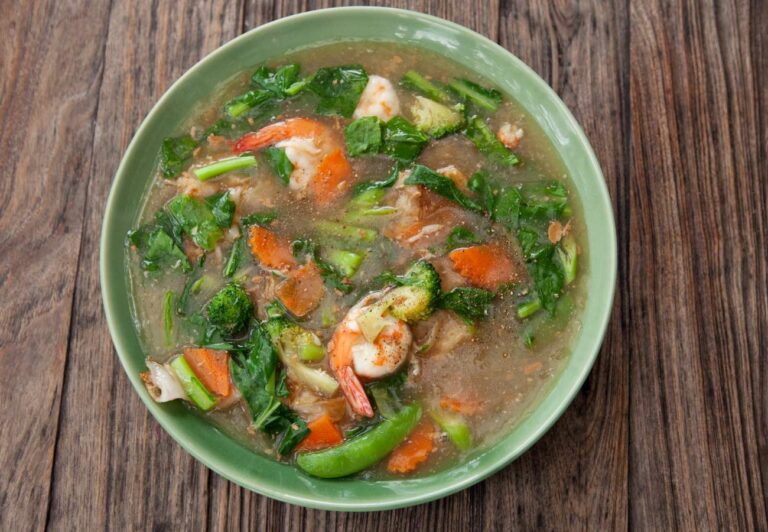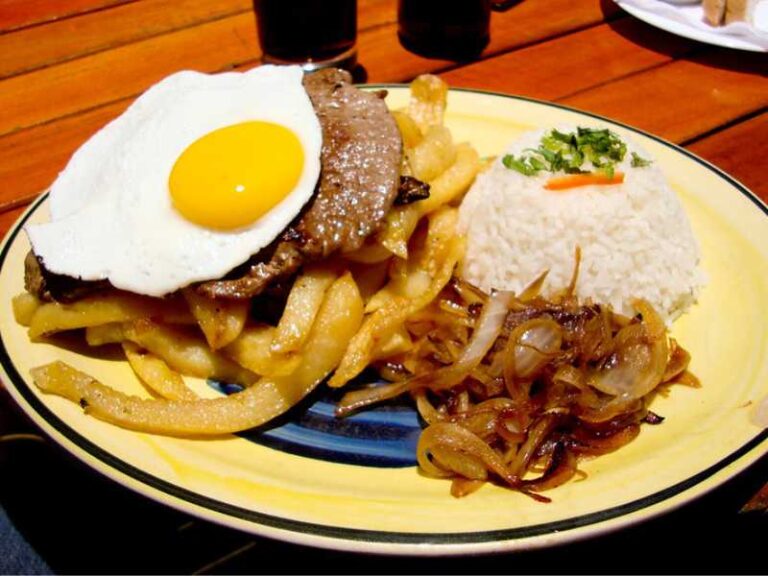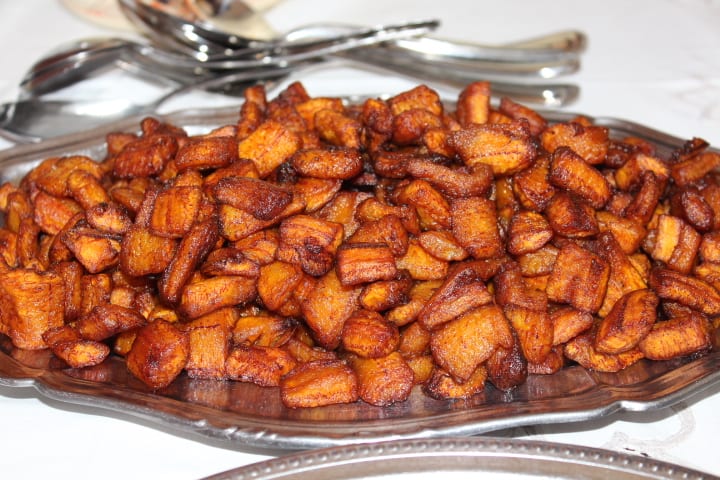Japanese Tonkotsu Ramen Recipe
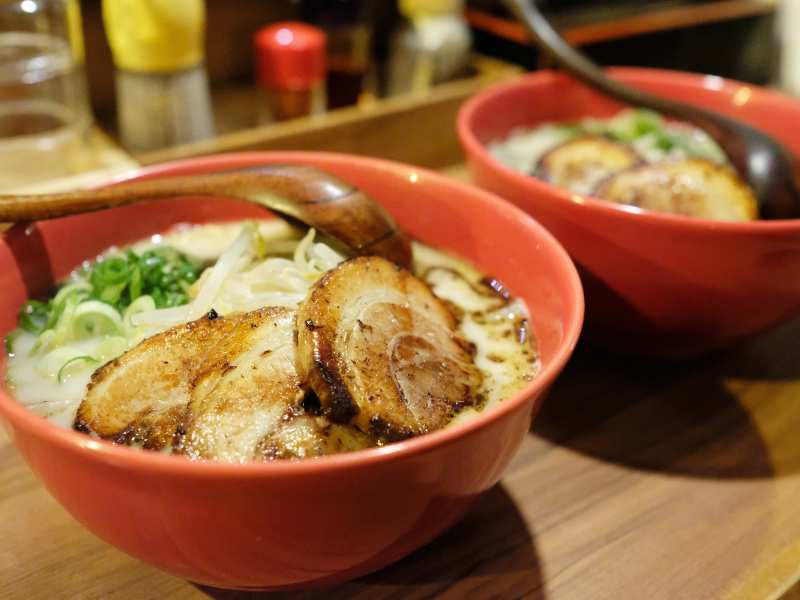
Tonkatsu Ramen is a Japanese ramen noodle dish made with noodles and a creamy broth made from pork bones and flavored with garlic, ginger, scallions and onions. Toppings such as a soft-boiled egg, sliced pork belly, and green onion are often added to accompany the noodles.
The creation of all ramen broths is a notoriously time-consuming process, and tonkotsu broth is no exception. Some recipes call for as many as 60 hours of cooking down the pork bone, this gives enough time for all the good bits of the pork (the fat, marrow, and even the many minerals and nutrients) to detach from the bone and mix into the broth, giving it that distinct creamy white color.
Fortunately, appliances such as pressure cookers can help to reduce this cooking time to a much more manageable couple of hours. It is also completely acceptable and common to buy pre-made ramen noodles, as this saves a significant amount of time and effort.
Once the broth is finally prepared and the noodles and toppings are added to create a bowl of tonkotsu, it should be eaten quickly. The ramen noodles will quickly soften in the hot broth, making them an undesirable mushy texture.
This is why, in Japan, it is common to slurp your ramen, it allows you to cool the noodles as you eat them. A cooled-down ramen is a ruined ramen!
Origin & Cultural Significance
‘Tonkotsu’ simply means the bones and organs of pork, signifying the special method behind the broth. This dish originated in the coastal city of Fukuoka, Japan, in the 1930s at a food stall named Nankin Senryo. Before this, the bone broth had been made using chicken bones.
The creator of tonkotsu ramen saw that pork bones were actually cheaper and decided to use them to make a new broth.
Since then, tonkotsu ramen has spread throughout Japan and the world and become one of the most popular styles of ramen. Along with other popular ramen styles, such as Miso and Soy Sauce Ramen, ramen has become a mainstay of Japanese cuisine.
However, ramen is not actually Japanese but originates in China, and ramen is viewed as a Chinese food by Japanese people, one that just happens to have some Japanese fusion.
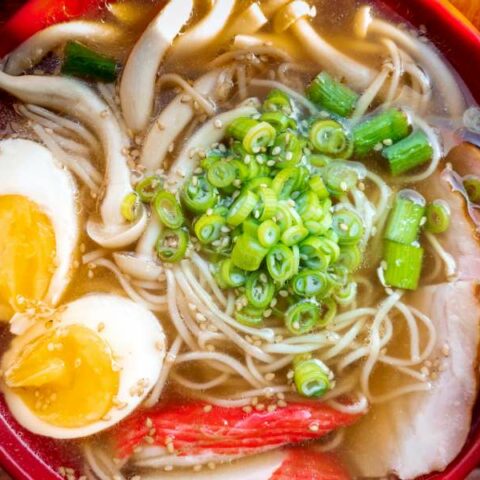
Japanese Tonkotsu Ramen Recipe
Tonkatsu Ramen is a Japanese noodle dish made with noodles and a creamy broth made from pork bones and flavored with garlic, ginger, scallions and onions.
Ingredients
For the broth:
- Pig trotter (cut into 1-inch discs) - 2 pounds
- Chicken backs - 1.5 lb.
- Pork fat back - 1 lb.
- Vegetable oil - 2 tbsp
- Green onion (chopped) - 1
- Garlic (chopped) - 8 cloves
- Ginger (chopped) - 1 medium piece
- Leeks (chopped) - 2
- Scallions, white part only (chopped) - ½ cup
- Mushrooms (cremini, white, shiitake) - 6 oz.
For the pork belly:
- Pork belly - 1 lb
- Soy sauce, low sodium - ¼ cup
- Mirin - ½ cup
- Sake - ½ cup
- Sugar - ¼ cup
- Green onions (chopped) - 2
- Garlic (whole) - 4 cloves
Miso tare:
- White miso - ½ cup
- Mirin - ¼ cup
- Sake - ¼ cup
- Salt - 1 tsp
To assemble the bowls:
- Broth - 8 cups
- Ramen noodles - 12 oz.
- Eggs - 4
- Enoki mushrooms - 4 oz.
- Green onions (thinly sliced) - about ½ cup in total
Instructions
- You will be preparing your broth in advance, as it will take 12 hours to make. This is a great time to also begin to marinate your pork belly.
- To marinate pork belly: combine soy sauce, mirin, cooking sake, sugar, garlic and green onions in a large freezer bag. You will sous vide the pork belly, so use a straw to suck the air from the back after you place the pork belly inside and massage the marinade into the meat. Make sure you create a vacuum seal around the meat.
- Sous vide the pork at 160 F for 12 hours. This will be happening alongside the cooking of your broth.
- Now, prepare your broth by blanching the bones. In a large stockpot, submerge pork and chicken bones in cold water. Bring the water to a rolling boil on high heat. Remove the bones once the boil begins.
- During step 4, heat your cooking oil in a skillet on high heat. Add onions, garlic, and ginger. Cook until charred, anywhere from 13-16 minutes. Save for later.
- Dump all the boiled water from the pot after removing the bones. Run the bones under cold water, using your fingers or a small instrument to remove any imperfections from the bones– marrow, blood, etc. Scrub the bones so they are white.
- Back in the large stock pot, put bones, vegetables, leeks, scallions, pork fatback, and mushrooms. Cover with water and put on high heat, bringing to a rolling boil. Keep at a rolling boil for 30 minutes, using this time to remove any imperfections that float to the top of the broth.
- Reduce to a soft boil and cover with a lid. After about 4 hours at this boil, remove the pork fat and reserve it in a Tupperware. Refrigerate for later. Continue cooking for another 7-8 hours, checking occasionally to ensure the broth is becoming opaque and creamy.
- After 11-12 hours of cook time, bring the burner to high until the broth begins to reduce. Let it reduce until the broth has reached your desired consistency. Pass through a strainer into a clean pot, throwing out the solids used to flavor the broth. While the broth is reducing, get started on preparing your other ingredients for assembly.
- Remove your pork from the vacuum-sealed bag and let it cool. Slice into thin slices, similar to bacon, and set aside.
- Combine all the ingredients for the miso tare and simmer for 3-5 minutes.
- Boil your eggs for 7 minutes, to achieve a soft-boiled yolk. Peel and slice in half lengthwise.
- Now, begin to assemble your bowl. Cook the ramen noodles according to the package.
- Fry the pork belly on both sides until lightly browned. Saute the mushrooms until soft.
- Gather 4 bowls and equally distribute the miso tare into each bowl. Add broth into the bowls, and then the cooked noodles. Add in the boiled egg and top with green onions.
- Add more toppings as you see fit, such as chili oil or bean sprouts. Enjoy!
Nutrition Information:
Yield: 4 Serving Size: 1Amount Per Serving: Calories: 2682Total Fat: 181gSaturated Fat: 57gTrans Fat: 1gUnsaturated Fat: 111gCholesterol: 788mgSodium: 3929mgCarbohydrates: 87gFiber: 8gSugar: 45gProtein: 154g
Nutrition is provided and calculated by Nutritionix. It is for general information purposes and is only a rough estimation.



